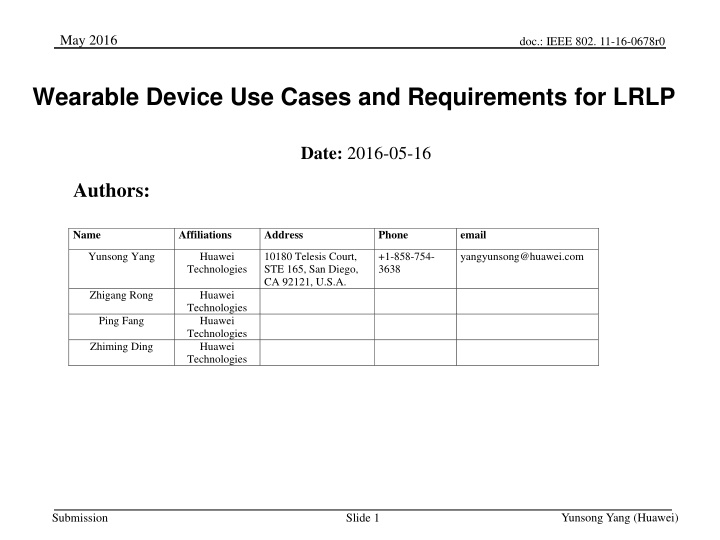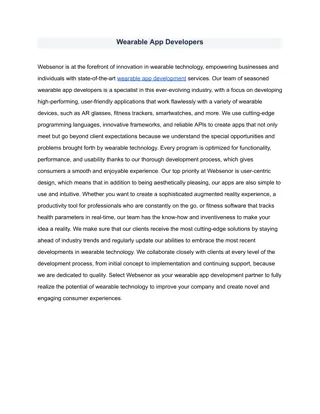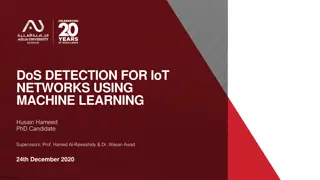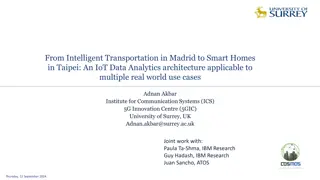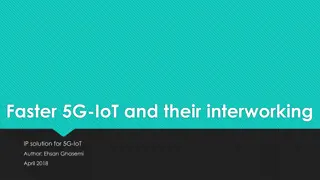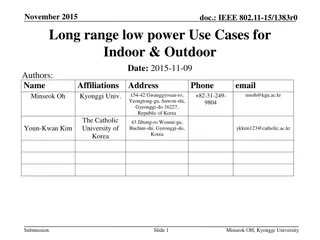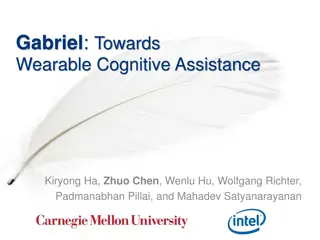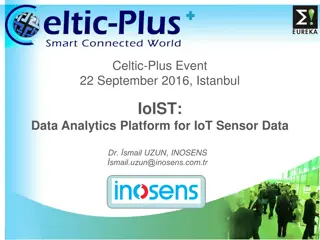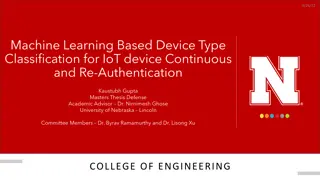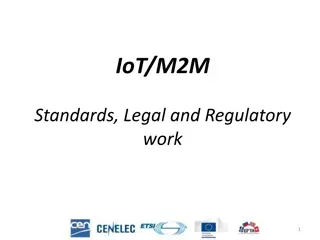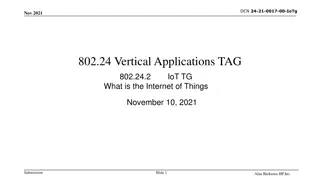Wearable Device Use Cases and Requirements for IoT
Proposal of use cases and requirements for wearable devices in IoT, focusing on low power design considerations. Discusses applications like AR and activity monitoring, presenting detailed requirements such as high data rate support and low transmission power for extended battery life.
Download Presentation

Please find below an Image/Link to download the presentation.
The content on the website is provided AS IS for your information and personal use only. It may not be sold, licensed, or shared on other websites without obtaining consent from the author.If you encounter any issues during the download, it is possible that the publisher has removed the file from their server.
You are allowed to download the files provided on this website for personal or commercial use, subject to the condition that they are used lawfully. All files are the property of their respective owners.
The content on the website is provided AS IS for your information and personal use only. It may not be sold, licensed, or shared on other websites without obtaining consent from the author.
E N D
Presentation Transcript
May 2016 doc.: IEEE 802. 11-16-0678r0 Wearable Device Use Cases and Requirements for LRLP Date: 2016-05-16 Authors: Name Affiliations Address Phone email Yunsong Yang Huawei Technologies 10180 Telesis Court, STE 165, San Diego, CA 92121, U.S.A. +1-858-754- 3638 yangyunsong@huawei.com Zhigang Rong Huawei Technologies Huawei Technologies Huawei Technologies Ping Fang Zhiming Ding Yunsong Yang (Huawei) Submission Slide 1
May 2016 doc.: IEEE 802. 11-16-0678r0 Introduction Several indoor and outdoor use cases have been proposed in LRLP TIG [1, 2, 3, 4] Wearable devices (WDs) are considered as a main target area for IoT. o A primary design consideration for wearable devices is low power. In this contribution, we present the following use cases involving wearable devices and discuss the requirements associated with them: o Wearable augmented reality (AR) devices o Wearable activity/health monitoring devices Yunsong Yang (Huawei) Slide 2
May 2016 doc.: IEEE 802. 11-16-0678r0 Wearable AR devices use case Description o A consumer wearable device supports augmented reality(AR) applications. Low power Wi-Fi is used to tether the wearable AR device with a smartphone for connecting to the Internet and Cloud. Requirements o Support of high data rate and throughput up to tens of Mbps. o Support of low latency. o Support of low transmission power to mitigate potential impact on eyes and to prolong the battery life. Yunsong Yang (Huawei) Slide 3
May 2016 doc.: IEEE 802. 11-16-0678r0 Wearable activity/health monitoring devices use case Description o A user wears activity and health monitoring devices. Low power Wi-Fi is used to tether these wearable devices with a smartphone for connecting to the Internet and Cloud. Requirements o Support of low transmission power To limit the signal coverage in order to mitigate eavesdropping To prolong the battery life on WDs o Support of user privacy protection at Layer 2 To prevent leaking user private information To prevent user tracking Yunsong Yang (Huawei) Slide 4
May 2016 doc.: IEEE 802. 11-16-0678r0 Competitiveness against other technologies Comparing to BLE/ZigBee o 802.11 supports higher data rate and throughput, which is desirable for AR applications o 802.11 is perceived to be more secure Comparing to cellular o 802.11 supports higher data rate and throughput with lower total cost of ownership (TCO) than cellular based solutions o 802.11 with low power enhancement can achieve lower power consumption than cellular Yunsong Yang (Huawei) Slide 5
May 2016 doc.: IEEE 802. 11-16-0678r0 Summary We have presented two wearable device use cases for LRLP. We have also proposed the following requirements associated with these use cases: o Support of a wide range of data rates and throughputs, up to tens of Mbps o Support of low latency o Support of low transmission power To lower power consumption and prolong the battery life To limit the signal coverage in order to mitigate eavesdropping o Support of user privacy protection at Layer 2 To prevent leaking user private information To prevent user tracking Yunsong Yang (Huawei) Slide 6
May 2016 doc.: IEEE 802. 11-16-0678r0 References [1] IEEE 802.11-15/1140r1, Long range low power Use Cases for Indoor [2] IEEE 802.11-15/1383r0, LRLP TIG - Use Cases for Indoor & Outdoor [3] IEEE 802.11-15/1365r0, LRLP TIG - Use Cases of LRLP Operation for IoT [4] IEEE 802.11-15/1112r1 Use Case of LRLP Operation for IoT Yunsong Yang (Huawei) Slide 7
